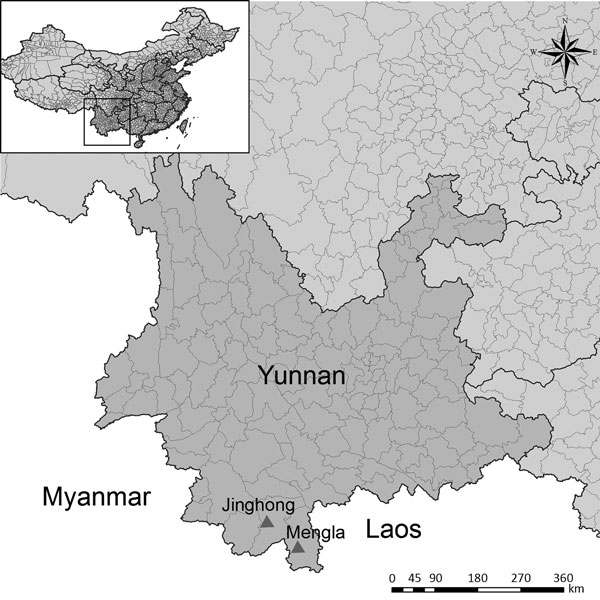Volume 23, Number 3—March 2017
Dispatch
Genetically Diverse Filoviruses in Rousettus and Eonycteris spp. Bats, China, 2009 and 2015
Figure 1

Figure 1. Bat collection sites for a study on genetically diverse filoviruses in Rousettus and Eonycteris spp. bats in China. Triangles indicate Jinghong City and Mengla County, Yunnan Province, where 150 apparently healthy adult bats were collected from 2 caves in November 2009 (Jinghong City) and December 2015 (Mengla County). Inset map shows the location of Yunnan Province in China.
1These authors contributed equally to this article.
Page created: February 23, 2017
Page updated: February 23, 2017
Page reviewed: February 23, 2017
The conclusions, findings, and opinions expressed by authors contributing to this journal do not necessarily reflect the official position of the U.S. Department of Health and Human Services, the Public Health Service, the Centers for Disease Control and Prevention, or the authors' affiliated institutions. Use of trade names is for identification only and does not imply endorsement by any of the groups named above.